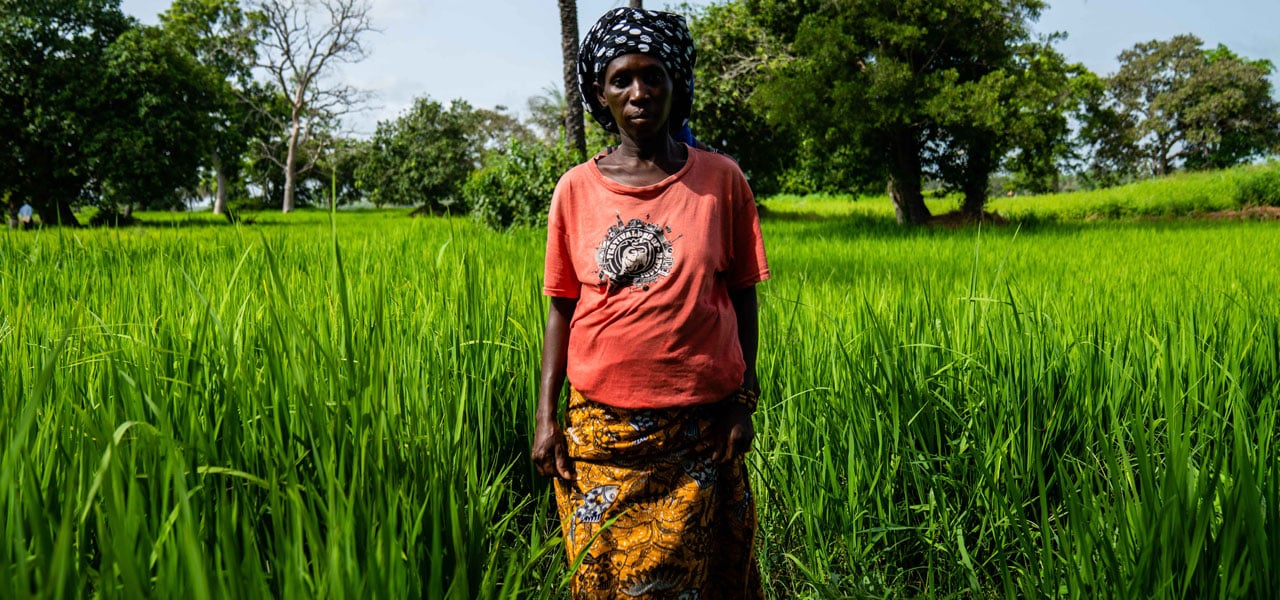GaHPS seeks to describe the physiological, biochemical and structural changes that occur in pregnancy due to both acute and chronic heat stress exposure.
This 4 year project began in June 2023 and is a partnership between the Medical Research Council Unit The Gambia, the University of Cambridge, UK and the University of Thessaly, Greece. The project is funded by the Wellcome Trust.
GaHPS’s research portfolio consists of five work streams for conducting research on understanding the impact of heat and extreme heat in pregnancy and pregnancy outcomes. The work streams include evidence synthesis, heat chamber studies, observation cohort studies, placental changes including molecular changes, qualitative studies and co-design of potential interventions.
Maternal heat exposure increases the risk of multiple adverse pregnancy outcomes: congenital abnormalities, stillbirth, preterm birth, low birth weight, pre-eclampsia, and premature rupture of membranes. However, the pathophysiological mechanisms driving these adverse outcomes remain unknown. While thermoregulation in pregnancy is likely to be conserved, our recent work in The Gambia showed that pregnant subsistence farmers are exposed to extreme heat in 20% of their working shifts, which acutely alters fetal heart rate and placental blood flow.
The majority of people at risk of extreme heat live in tropical regions, primarily due to the high proportion of people working outdoors in manual agricultural activities. West Africa suffers extreme heat in addition to the compounding impacts of food insecurity, vector-borne diseases, and water scarcity/flooding from climate change. West Africa will be severely affected by extreme weather events, including extreme heat, even if the Paris Agreement target of 1.5°C warming is met. In West Africa, half of agricultural workers are women, and many work during pregnancy. They perform much of the subsistence farm-work and many strenuous manual tasks. We previously found these pregnant women struggled with physical symptoms, work-load, and had few options for adaptation when working in the heat. It is therefore an ideal setting in which to further investigate the effects of extreme heat in order to determine the underlying physiological processes prior to trialling tailored interventions.
- Work Package 1: Evidence synthesis of the physiological mechanisms underlying biological vulnerability of maternal and fetal health to heat
This systematic review aims to expand our understanding of the relationship between environmental heat stress exposure and maternal, placental and fetal physiological and biological responses.
- Work Package 2: Heat chamber studies
Study population: pregnant women of all ages who live in Greece.
Study duration
12 months
Aims
This project aims to understand acute changes in physiology and safety limits for heat stress exposure in pregnancy.
Specific objectives
- Determine exposure thresholds of heat stress for maternal and fetal physiology and pregnancy outcomes.
- Identify vulnerability factors through exploration of heterogeneity in physiological responses to heat exposure.
- Evaluate heat stress impact on the materno-placental interface, by establishing the relationship between heat stress and placental blood flow and function.
- Work Package 3: Prospective cohort of heat stress impacts on pregnancy in The Gambia
Study population
Pregnant women of all ages who live in either Basse and the surrounding region or Brikama and the surrounding area, The Gambia.
Study duration
36 months
Aims: This project aims to determine the physiological and biochemical changes that occur in pregnancy due to heat stress and how these impact maternal, fetal and newborn health and well-being.
Specific objectives
- Derive high-resolution, spatiotemporal thermal and heat stress maps of the residential area of all study participants.
- Identify areas in the study region most affected by heat and heat stress and the potential relationship with geographic, topographic and ecological features.
- Estimate air pollution exposure through an ad hoc monitoring campaign on a sub-set of participants using wearable air pollution monitors.
- Determine the heat stress exposure in pregnancy that occurs in the study regions and how these differ by site.
- Estimate physiological heat strain in pregnancy and how it varies by gestational age and with heat exposure.
- Determine the acute and chronic impact of heat stress on materno-placental blood flow.
- Identify critical windows in pregnancy for functional and vascular/structural changes in the placenta.
- Determine the impact of maternal chronic heat stress by trimester on neonatal neuro-behaviour.
- Work Package 4: Placenta studies
Placental samples collected at birth from a subset of participants in WP3 will be used to assess the effect of heat stress on:
- structural changes in vascular density and exchange surface area using histology and stereology; and
- molecular changes in functional genes by performing an agnostic whole transcriptome assessment using RNA-sequencing. A biobank of placenta samples will allow future work focused on targeted investigation of genes and exploring the involvement of epigenetic mechanisms.
Finally, we will conduct specific heat exposure experiments on placenta trophoblast. Trophoblasts will be exposed to different levels of heat stress and impacts on viability, nutrient uptake, hormone and cytokine secretion, and heat/cellular stress assessed to understand the causal link between heat and placental functional changes. The specific functional measures will be informed by our RNA-sequencing analyses of the human placenta and maternal blood analyses assessed as part of this and other work packages.
- Work Package Five: Co-design of potential adaptations
In view of the high likelihood of global heating exceeding 1.5°C and so missing the Paris Agreement, it is imperative to consider adaptations. Effective and sustainable adaptations should be co-produced by communities, researchers, intervention providers and key stakeholders. This WP will be based on the three-stage framework of:
- evidence review and stakeholder engagement,
- co-production and
- prototyping.
Stage one will have been mostly completed in WP1, with additional insight from WP2-4. Key stakeholders within The Gambian government, including those working on health policy, environment and climate change and women’s health, alongside relevant NGOs and other key actors will be invited to discuss the findings and consider locally applicable adaptation options. We will then run a series of workshops within the communities, to discuss heat adaptation options. These will include individual measures such as: alteration of work schedule, regular hydration, communal cooling areas, rest, shade, use of fans etc. We will also explore ideas and feelings regarding community-based interventions such as: ensuring protection of trees in cities to reduce the urban heat island effect, structural changes to buildings to aid natural cooling – such as ventilation, use of heavy earth and cool roofs. Building on the results from this we would aim to apply for funding to trial the prototypes of the interventions that are locally popular and likely to be effective and sustainable.





